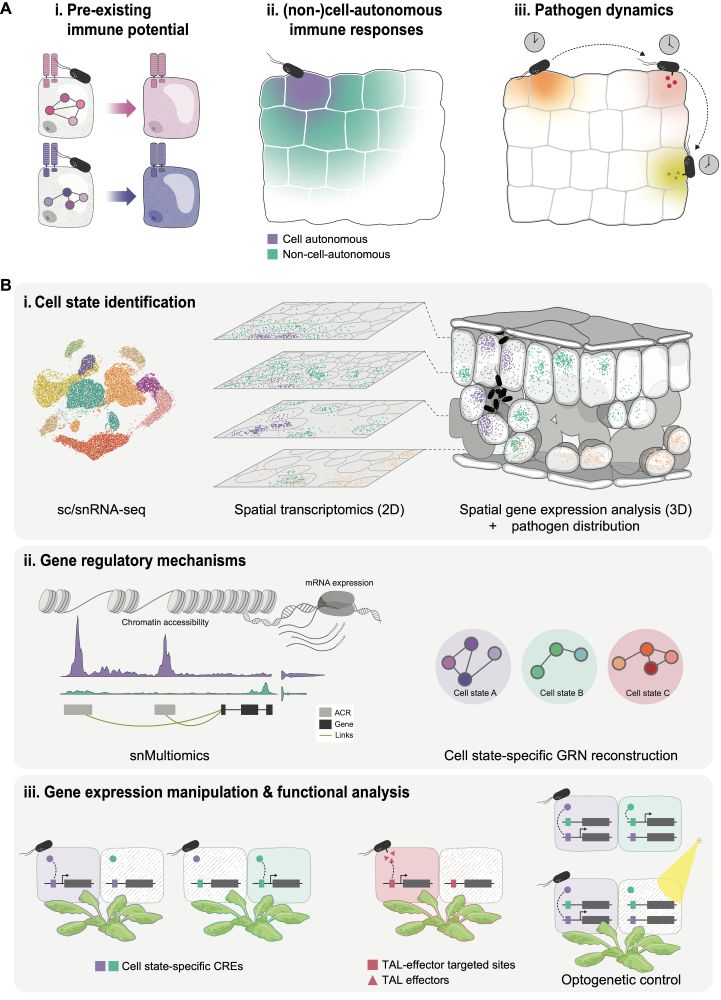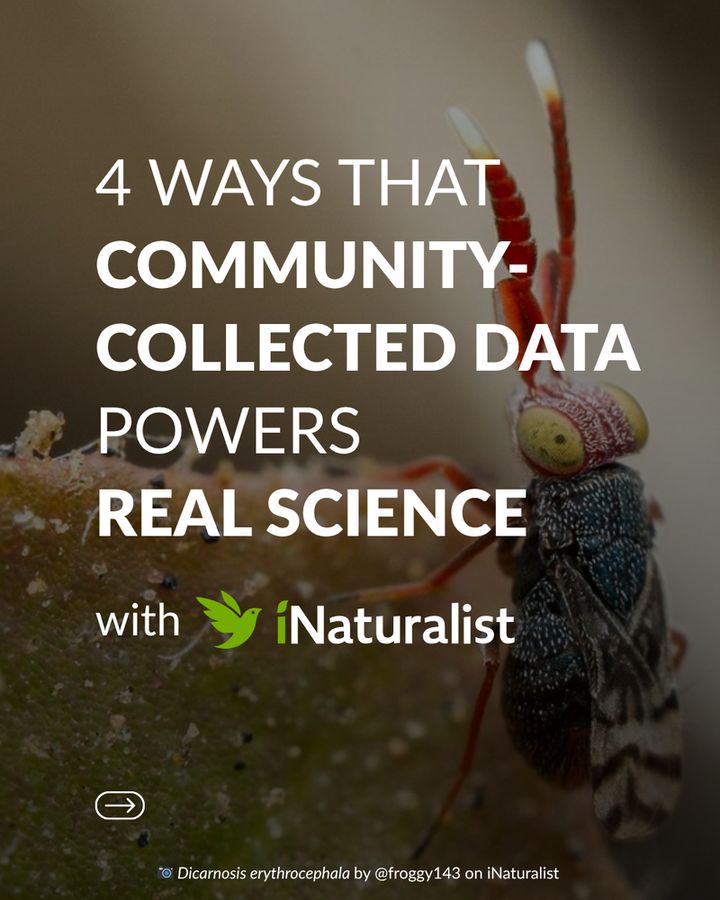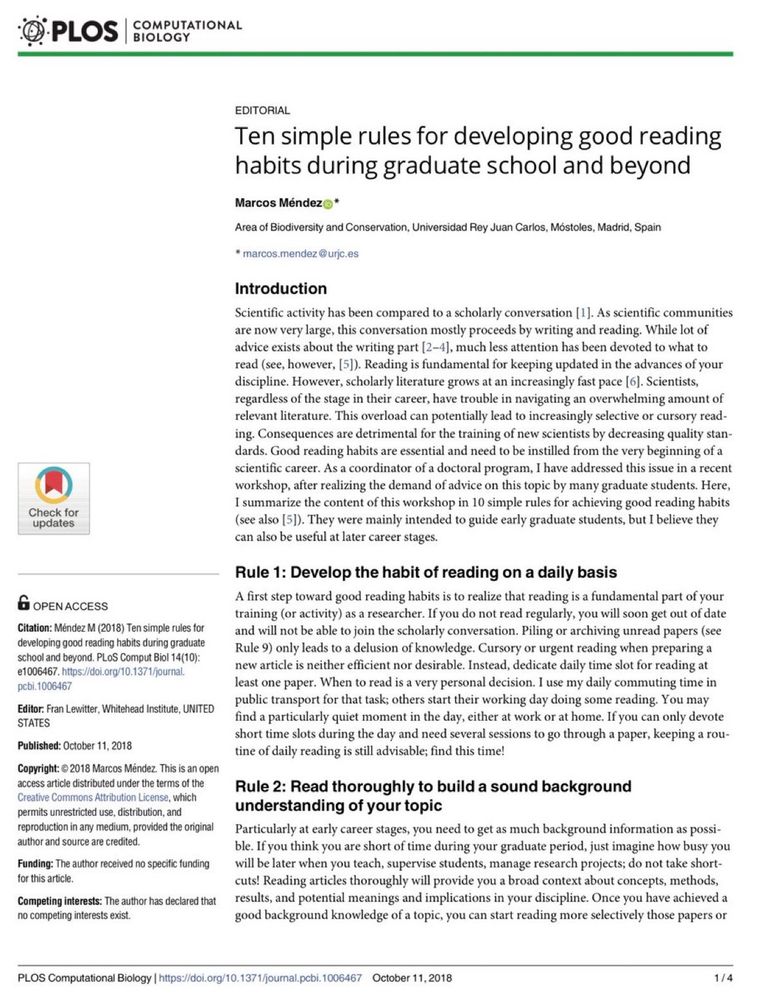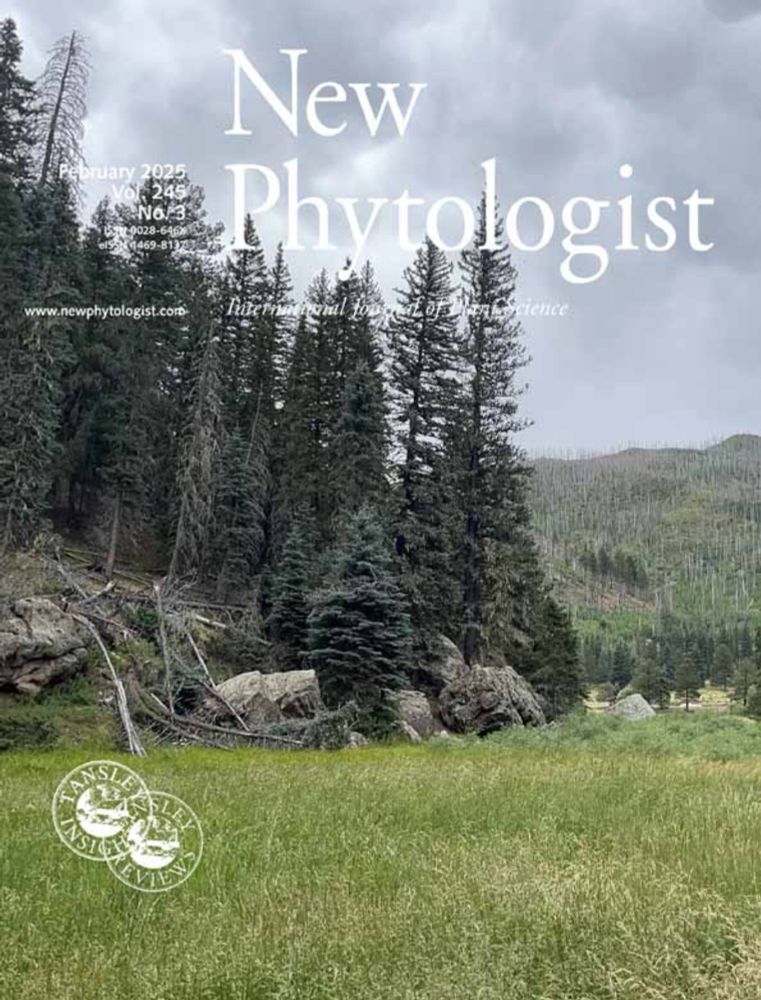
Our paper on using #eDNA from rainwater to study hidden biodiversity in #tropical #forest #canopies is now out in Science Advances! This method is a major step forward for the study and #conservation of this inaccessible compartiment. www.science.org/doi/10.1126/...
Photo: J. Raynaud
13.08.2025 19:00 — 👍 32 🔁 12 💬 1 📌 1

Born to rewild: Reconnecting beneficial plant-microbiome alliances for resilient future crops
Plant domestication is a coevolutionary process shaped by human selection, favoring traits supporting modern-day agriculture. This process has reduced…
Born to rewild: Reconnecting beneficial plant-microbiome alliances for resilient future crops
@cp-cellhostmicrobe.bsky.social review by Dario X. Ramirez-Villacis, Antonio Leon-Reyes, @cornepieterse.bsky.social and Jos Raaijmakers @niooknaw.bsky.social
www.sciencedirect.com/science/arti...
14.08.2025 08:08 — 👍 10 🔁 8 💬 0 📌 0

How can we better understand the plant immune system? In my new @cp-cellhostmicrobe.bsky.social piece, I propose “immune cell states” as a framework for uniting molecular and cellular perspectives.
www.cell.com/cell-host-mi...
13.08.2025 15:12 — 👍 80 🔁 39 💬 3 📌 3


This new paper documents a tenfold increase in research papers using community-collected iNaturalist data over just five years: tr.ee/89Ot3I
According to the study, here are four key ways that iNaturalist data directly powers science 🧵⤵️
28.07.2025 16:37 — 👍 84 🔁 39 💬 2 📌 2

A striking white flower stands out with six arced petals against a dark background.
Fire, Bees, and Ants: How Apodolirion buchananii Masterminds its Reproduction
A unique South African plant brings together fire, bees, and ants in a clever strategy to ensure its survival and reproduction.
wp.me/pdRZhH-lWF
#Botany #PlantScience 🧪
25.04.2025 18:58 — 👍 24 🔁 4 💬 0 📌 1

Diagramatic illustration of the molecular and biochemical mechanisms plants use to develop herbicide resistance. Mutations in herbicide target proteins prevent effective binding, while gene amplification boosts target protein expression, allowing plants to survive. Epigenetic modifications, such as DNA methylation, silence genes related to herbicide sensitivity or maintain genes promoting tolerance. Herbicide detoxification occurs in three phases: phase I modifies the herbicide (e.g. hydroxylation), phase II conjugates it with sugars, and phase III transports the detoxified molecules out of the cell. These processes enable resistant plants to survive and neutralize herbicides.
🧬 🌱 VIEWPOINT: 'Transposable element-driven evolution of herbicide resistance in plants' – Madhab Kumar Sen et al. doi.org/10.1093/jxb/...
#PlantScience 🧪
17.04.2025 09:39 — 👍 19 🔁 6 💬 0 📌 0
A woman studies embryos for decades, struggles for funding and respect. She publishes under her husband’s name, until they divorce. A single mother, she moves across an ocean to continue her studies. It all sounds quite modern, until you learn that she also worried she’d be burned as a witch. 🧵 1/15
11.03.2025 16:04 — 👍 309 🔁 95 💬 8 📌 14
My latest article for The Observer 😍🙏
08.02.2025 18:23 — 👍 23 🔁 9 💬 1 📌 1

Two young women examine tropical leaves, but which one is the botanist?
📝 #WhoIsABotanist? 🧵
https://doi.org/n4sc
With plant knowledge touching so many parts of our lives, what is it that makes someone a Botanist?
#Botany #PlantScience 🧪 #InBrief
There’s an interesting paper in Italian Botanist by Lorenzo Peruzzi,
01.02.2025 09:00 — 👍 18 🔁 4 💬 1 📌 0

Eavesdropping vs conscious warning
Plants warn neighbouring plants against attach, don’t they? A new study shows that plants might not be as altruistic as we think.
Plants warn neighbouring plants against attach, don’t they? A new study @pnas.org shows that plants might not be as altruistic as we think.
Read more about this study on my blog plantenzo.net/2025/01/28/e...
🧪 #PlantScience
28.01.2025 07:23 — 👍 2 🔁 1 💬 1 📌 0

Image: Pterostylis recurva by Gnangarra / Wikimedia Commons, CC BY 2.5 AU https://creativecommons.org/licenses/by/2.5/au/deed.en,
A stripy orchid that doesn't look very eye-catching.
📝 The Love Lies and Sweet Rewards of Australian Orchids 🧵
https://doi.org/n3r2
New research uncovers how Australian orchids seduce fungus gnats with a sophisticated blend of chemical perfumes and sugary bribes.
#Botany #PlantScience 🧪 #InBrief
28.01.2025 09:00 — 👍 24 🔁 4 💬 3 📌 0

Our latest study explores how drought and pollinators shape the evolution of floral traits in Brassica rapa. We reveal how water scarcity drives earlier flowering, while pollinators select for larger flowers. Here's why this matters👇
#ClimateChange #Pollination #selection
27.01.2025 01:39 — 👍 9 🔁 5 💬 1 📌 0

The Atlantic Forest in Brazil. A lush almost mossy looking canopy of trees covers pointy hills in close proximity. It's the kind of landscape that a geographer would get goosebumps looking at.
📝 How Amazon Trees Marched to the Atlantic Forest 🧵
https://doi.org/n3rb
Ancient rainforest trees found hidden highways through Brazil's drylands, making more than a dozen epic journeys from the Amazon to the Atlantic coast over twelve million years.
#Botany #PlantScience 🧪 #InBrief
27.01.2025 14:28 — 👍 35 🔁 12 💬 2 📌 1

Vascular tissue as a target for biotic factors. Under optimal conditions, the phloem and xylem coordinate numerous trophic relations within the plant. This situation changes upon infection by pathogens that can exploit vascular connections to redirect nutrients or to colonise the plant systemically. On the left panel, a healthy plant is depicted with a well-functioning vascular system which photosynthesises efficiently and transpires adequately. Water (H2O) gets taken up from the roots by xylem and the transpiration from aerial tissues of the plant creates a strong negative pressure facilitating distribution over long distance (depicted by blue arrows). Sucrose produced in source leaves is distributed via phloem to physiological sinks such as young leaves, roots and underground storage organs like tubers (red arrows). On the right panel, when the plant is under attack, these processes are compromised as the pathogens and newly arising physiological sinks impose high demands on the plant for nutrition and water. Pathogens use different ways to colonise and gain entry to the vascular system, from the top via stomata and other openings. Plant roots are also in constant contact with soil-borne pathogens, which are able to colonise the conductive tissue. Numerous insects including herbivorous like grasshoppers or sap drinkers like aphids or psyllids are natural vectors of vascular pathogens and are responsible for the spread of the majority of phloem-specific disease factors. Some of the uninvited guests (viruses, bacteria, protists, nematodes and galling insects) can manipulate and exploit plant vascular system and stimulate the development of galls or tumours to support nutrient redirection. Potential pathogen entry sites are depicted with black arrows.

Salient features of vascular transport through plant conductive tissues – xylem and phloem. Local and global distribution of water, mineral nutrients, carbohydrates, phytohormones, and primary and secondary metabolites, plays a crucial role in coordinating overall plant growth and nutrition. Lateral fluxes between these tissues help in reshuffling and modulating nutrient flow dynamically. The internal environment of the xylem is characterised by a huge negative pressure generated as the result of transpiration pull. This presents unfavourable and hostile conditions to invading pathogens. Phloem, on the contrary, represents a nutrient-rich and secure cellular environment, which is difficult to access for pathogens but readily habitable. Based on its function, phloem at different physiological source and sink regions can be divided into collection, transport and release phloem. Transporters such as bidirectional SUGARS WILL EVENTUALLY BE EXPORTED TRANSPORTERS (SWEETs) and unidirectional SUCs help in regulating carbohydrate transport across phloem parenchyma (PPs) and companion cells (CCs), which is then loaded into sieve elements (SEs). During pathogen infection, almost all aspects of vascular transport are manipulated by different microbes to suit their lifestyle and metabolic requirements (marked by lightning arrows in pink).
I'm enjoying reading this paper from @newphyt.bsky.social:
Vascular tissue – boon or bane? How pathogens usurp long-distance transport in plants and the defence mechanisms deployed to counteract them
Clear, accessible, & introduced me to new ideas that I hadn't thought of before #PlantScience
26.01.2025 23:59 — 👍 45 🔁 12 💬 0 📌 0

Why I teach my students about scientific failure
“It’s a lesson I wish I’d learned before starting grad school,” this professor writes
"In my undergraduate classes, I asked my students to complete lab experiments that were virtually guaranteed to yield interpretable data... I grew uncomfortable with the gap between those picture-perfect experiments and my own research projects."
www.science.org/content/arti...
26.01.2025 08:41 — 👍 11 🔁 2 💬 1 📌 0

Ten simple rules for developing good reading habits during graduate school and beyond
journals.plos.org/ploscompbiol...
26.01.2025 09:41 — 👍 168 🔁 71 💬 3 📌 11

Wired for Clean Energy: How unique bacteria make electricity-conducting wires
Meet the methane-munching bacteria that make their own molecular wires, paving the way for a sustainable future!
💡 International Day of Clean Energy
From flipping a switch to global sustainability, energy transforms lives. But did you know microbes like Geobacter can generate electricity? 🦠🔋
#CleanEnergy #MicrobialInnovation #SustainableFuture
#MicroSky
26.01.2025 12:32 — 👍 2 🔁 1 💬 0 📌 0

How does plant chemodiversity evolve? Testing five hypotheses in one population genetic model
See also the Commentary on this article by Speed & Ruxton, 245: 924–926.
Check out the latest Issue of New Phytologist with an article by two of our RU members Meike J. Wittmann and Andrea Bräutigam @andreabraeutigam.bsky.social!
How does plant chemodiversity evolve? Testing five hypotheses in one population genetic model
nph.onlinelibrary.wiley.com/doi/10.1111/...
15.01.2025 09:59 — 👍 8 🔁 6 💬 0 📌 0

Cell integrity limits ploidy in budding yeast
Full text: academic.oup.com/g3journal/ad...
#yeast #yeastbiology #microbiology #molecularbiology
26.01.2025 14:33 — 👍 11 🔁 3 💬 0 📌 0

Plate 161: Dwarf almond (Amygdalus nana)
Your daily dose of botanical drawings from the Botanical Magazine.
Dwarf almond (Amygdalus nana)
Plate 161 in volume 5, 1792.
#magazine #artist #plants #curtis #botany
26.01.2025 16:40 — 👍 4 🔁 2 💬 0 📌 0
RESEARCH: 'Irregular green netting of eggplant fruit peel: a domestication trait controlled by SmGLK2 with potential for fruit colour diversification' - Andrea Arrones et al, doi.org/10.1093/jxb/...
30.12.2024 10:00 — 👍 3 🔁 2 💬 0 📌 0
Academic Europe, the leading European career network for Academics, Researchers and Scientists:
👉🏼 www.academiceurope.com / lnk.bio/AcademicEurope
The future of plant science relies on future plant scientists! Raising the profile of #plantscience across the UK & beyond. Funded by the Gatsby Charitable Foundation. Jointly based at Botanic Garden and Sainsbury Laboratory, University of Cambridge.
Palaeobotany | Scicomm | Associate Prof in Plant Science, Nottingham, UK | Vogon poet | Views my own | She/her
circadian rhythms | cell signalling | plants and microbes | Head of Cell and Developmental Biology @ John Innes Centre UK | Views my own.
Postdoc at Exeter Uni, excited about duckweed evodevo. Keen botanist, gardener & nature enthusiast with a love for bioimaging. Mum of two.
Senior Scientist at the JohnInnesCentre 🇬🇧. Hon. Fellow University of East Anglia, Fellow of the Royal Society of Biology (FRSB). Chartered Scientist. Research Partnerships and the Healthy Plants, Healthy People, Healthy Planet, Hub Lead for JIC/TSL.
Biologist. Professor of Plant Ecology. Tutor at The Queen’s College, Oxford. Author of Biology: The Whole Story.
Photosynthesis, Evolution, Guitars | Professor @OxfordBiology | Co-founder & CSO @WildBioscience
Plant circadian biology at Department of Plant Sciences University of Cambridge.
(She/her) Director of Learning Enhancement and Academic Practice at Buckinghamshire New University. NTF, PFHEA, still a biologist/plant scientist at heart https://www.bucks.ac.uk/about-us/our-staff/katharine-hubbard katharinehubbard.blog
🇫🇷🇬🇧 🧗♀️ 🚴🏻
Postdoc at @SLCU Cambridge, plant biologist by day, Auxin biosensor and protein engineer by night 🌱🔬
Post-doc @dromius @slcuplants l PhD @team_zuccaro | plant-fungal interactions🌱| Lindy Hop |🚲-lover | 🇪🇺 | he/him
Director of Cambridge University Botanic Garden. Professor of Plant Systematics and Evolution. Researching flower development and evolution.
Assistant Professor at Cambridge University. Plants, mycorrhiza, carbon. https://www.luginbuehllab.com/
Postdoc @ SLCU Cambridge | Plant Morphogenesis | Cell Division | Cell Growth | Mechanobiology | Microscopy
University of Edinburgh research group studying how protein modifications contribute to plant resilience in a changing environment.
Molecular plant biologist at sotonbiosciences.bsky.social, Director of SoCoBio DTP. Views are my own.
https://www.southampton.ac.uk/people/5wyk8h/professor-matthew-terry
Plant Molecular Biologist 🌱 Lecturer in Genetics Education at the University of Edinburgh. Tweets are my own 🌈
Lecturer in Computer Science at University of Exeter interested in Earth Observation 🛰️ for Forest 🌲 ecology -#EO #AI #LiDAR #time-series #Forest Developer of DASOS & PloToSat
Web: https://art-n-maths.github.io/
Loves dancing💃 & improv 🎭
Plant Molecular Physiology and Functional Genomics group🌱 Cracking crop resilience with grafting, single-cell approaches & synthetic biology for a changing climate 🌍 Head of group: @thepallavisingh.bsky.social; CM: @martinezgonixs.bsky.social




























